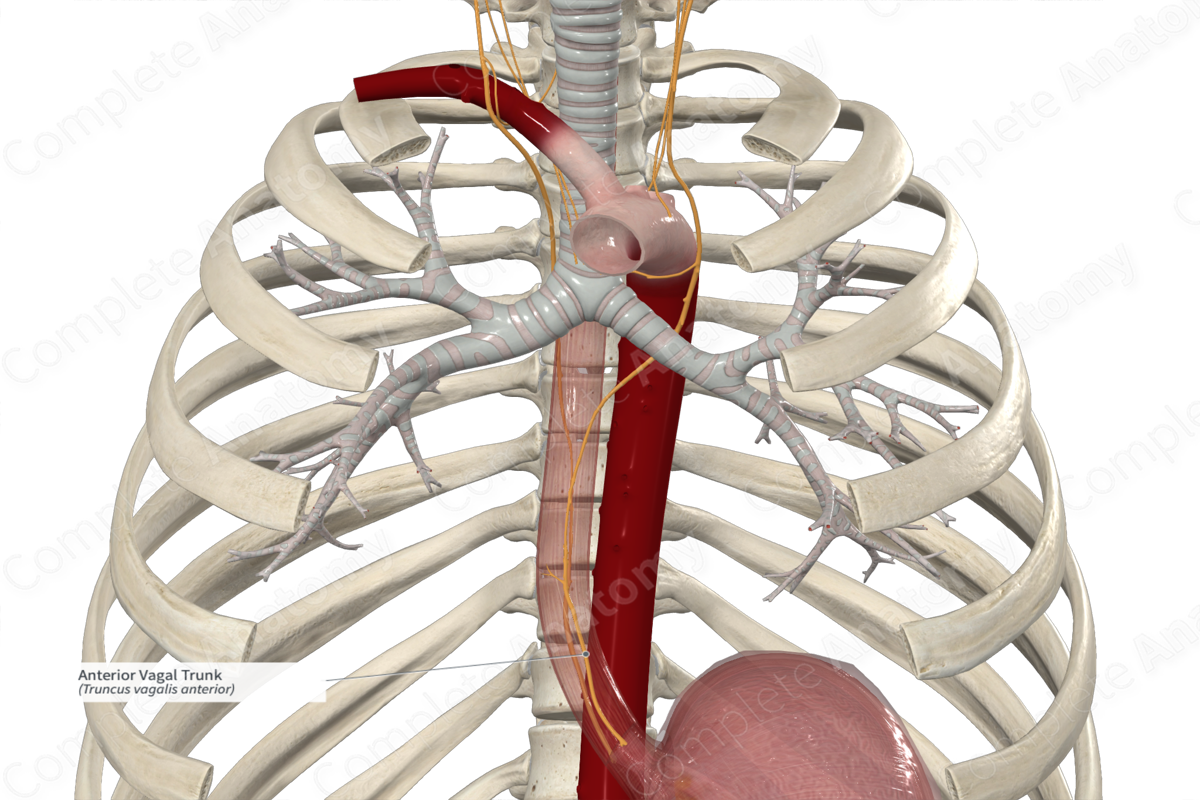
Quick Facts
Origin: Formed superior to the diaphragm by the coalescence of parasympathetic fibers from the anterior esophageal plexus.
Course: Passes along the anterior surface of the esophagus and through the esophageal hiatus of the diaphragm into the abdomen.
Branches: Gastric (anterior) and hepatic branches.
Supply: Mixed nerve supplying parasympathetic and visceral sensory innervation to the abdominal portion of the esophagus, anterosuperior surface of the stomach, the pylorus, proximal duodenum, head of the pancreas, liver, and associated biliary structures.
Related parts of the anatomy
Origin
The left vagus nerve passes posterior to the root of the lung and travels inferomedially and divides into the anterior esophageal plexus. At the distal end of the esophagus, just prior to its passage through the diaphragm, the remaining axons coalesce to form the anterior vagal trunk.
Course
The anterior vagal trunk accompanies the esophagus, passing between its anterior surface and the anterior rim of the esophageal hiatus of the diaphragm, to enter the abdominal cavity.
Branches
Upon entering the abdominal cavity, the anterior vagal trunk gives off short esophageal and gastric branches and finally a hepatic branch. These axons contribute to the periarterial plexus surrounding the common hepatic artery and its branches, as well as the plexus surrounding the biliary ducts.
Supplied Structures & Function
The anterior vagal trunk is a mixed nerve that conveys visceral sensory and parasympathetic fibers. It supplies the abdominal portion of the esophagus, cardia, lesser curvature, and superior portion of the anterior surface of the stomach. Branches passing between the layers of the lesser omentum reach the pylorus of the stomach, proximal portion of the duodenum, and head of the pancreas. At the porta hepatis, some fibers ascend to supply the biliary ducts, liver, gallbladder, and their associated arteries.
Learn more about this topic from other Elsevier products





